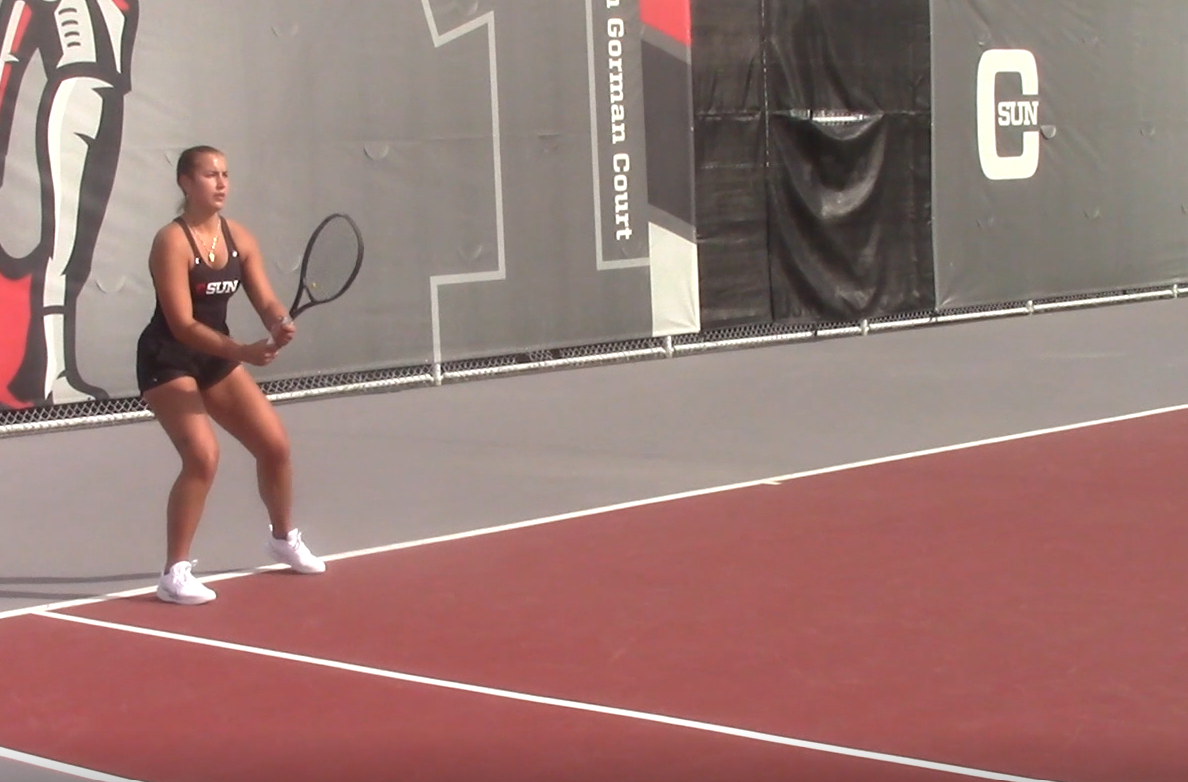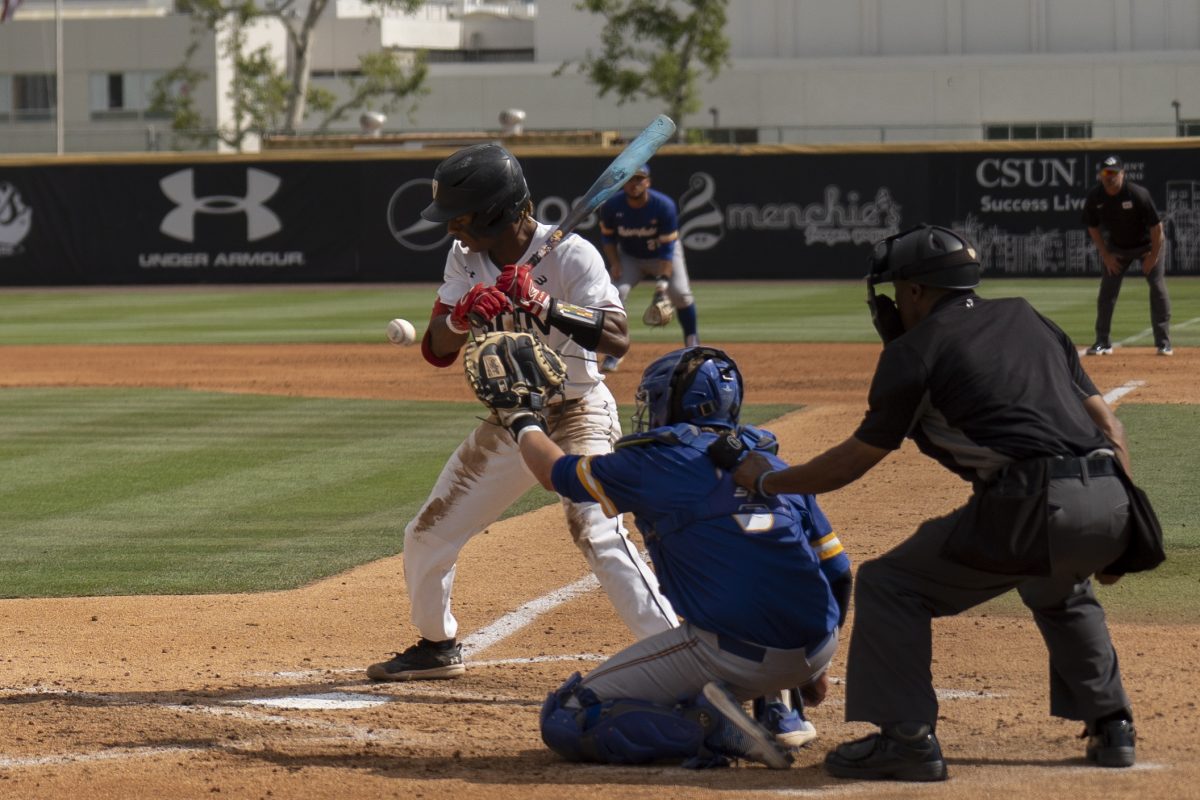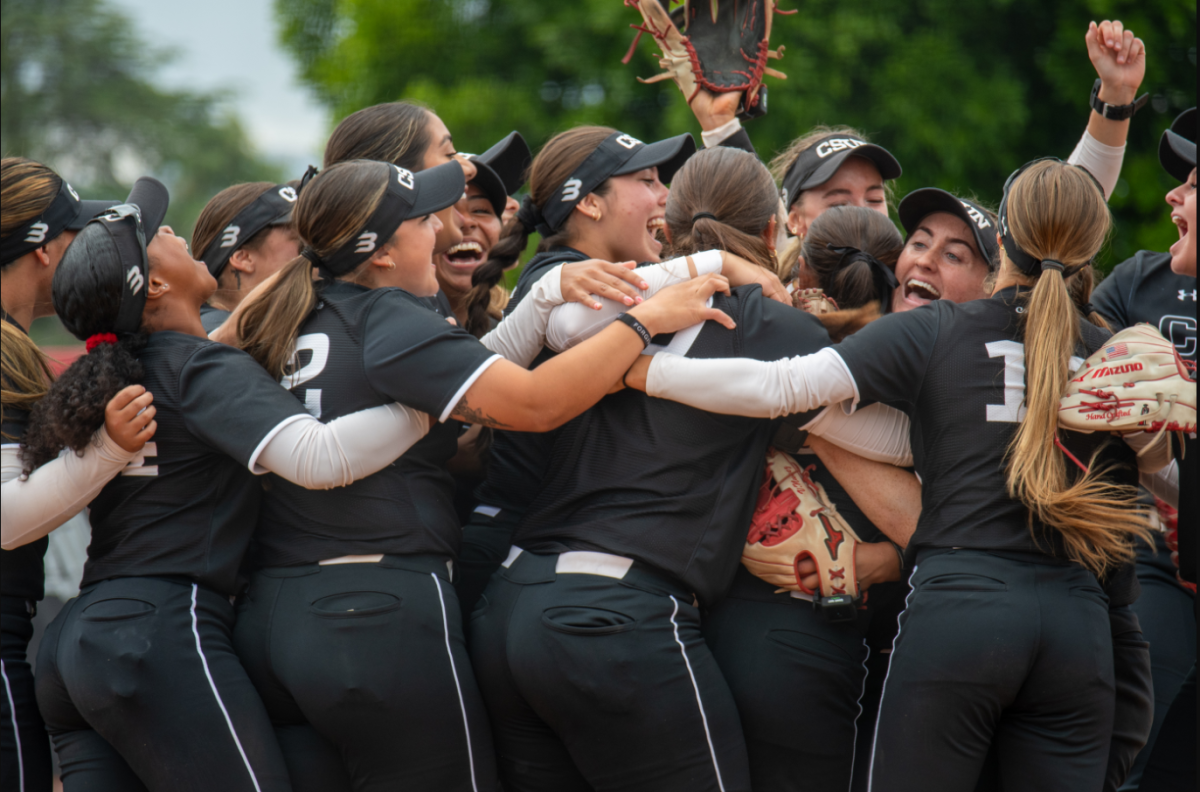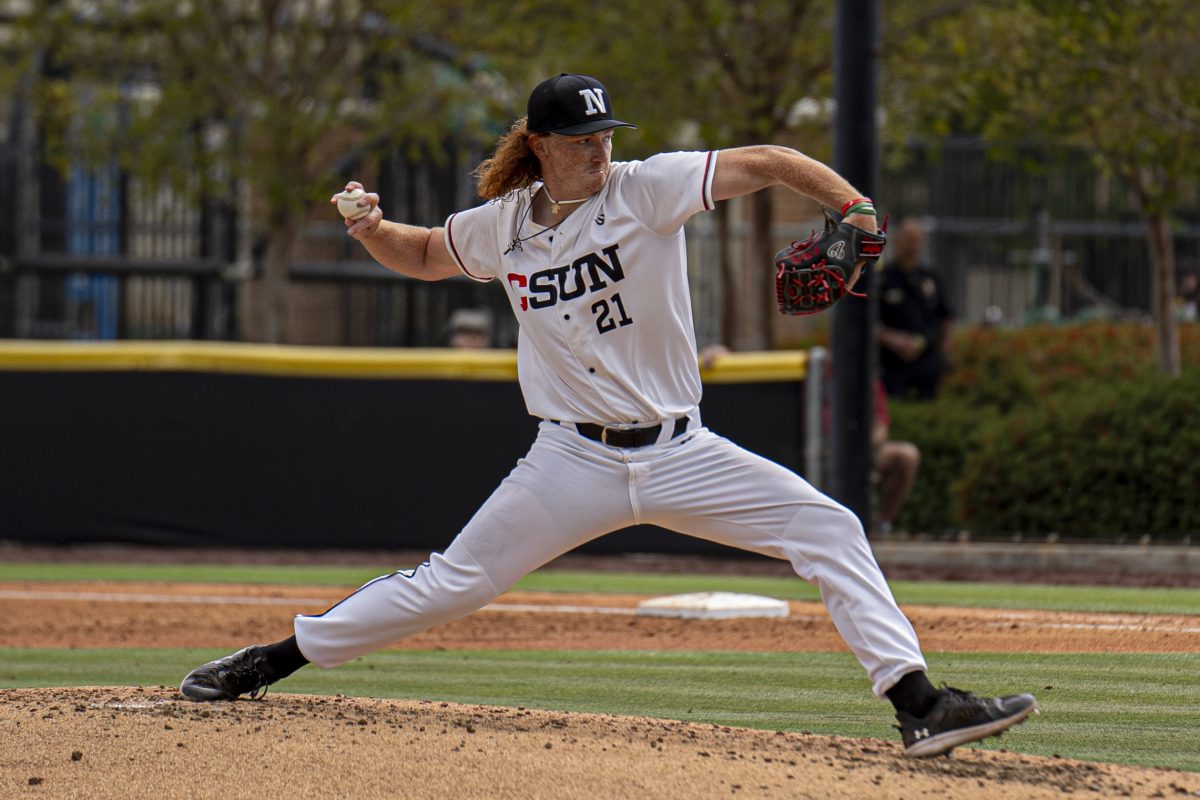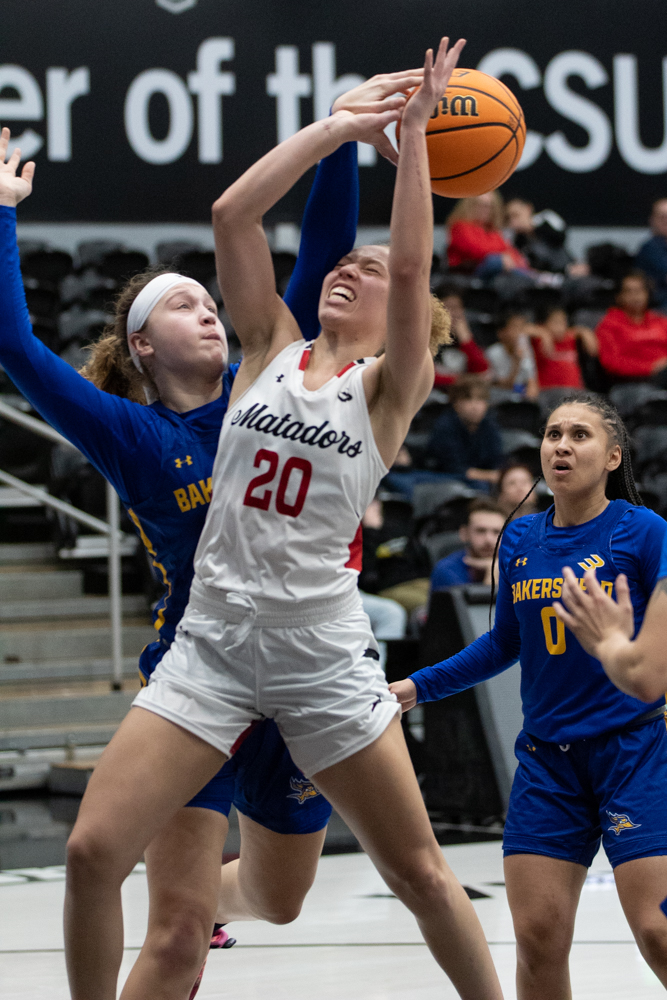Grappling and submission, joint-locks and chokes. The perfect weak spot to jab, the perfect placing of the arms around their opponent’s neck to cause a tap out. Just a few things jiu-jitsu members focus on when on the mat.
Ordinary fights may end with someone on the ground. But when practicing jiu-jitsu, that’s where they usually begin.
CSUN’s Brazilian Jiu-Jitsu Club was founded in 2010 by club president, Anthony Kaufman, and a few of his friends.
Kaufman, a junior majoring in business law, and his co-founders started the club with the hopes of spreading the art of jiu-jitsu and make it more popular among students. Unlike basketball or soccer, there is no official collegiate league for jiu-jitsu that fosters university-level interest in the sport. Although they do compete in unofficial tournaments organized by collegiate jiu-jitsu clubs in southern California, Kaufman said the club is not competitive in nature and is accessible to anyone who wants to learn the art.
The recent rise in popularity of competitive mixed martial arts (MMA) such as the Ultimate Fighting Championship (UFC) has sparked a public interest in Brazilian Jiu-Jitsu. Kaufman said when the club first started, they only had between four and 12 members, but better efforts to improve their visibility for the newly popular sport helped to triple their membership between the spring and fall semester of 2012. Now about 20 to 30 members on average come to grapple on the mats at bi-weekly training sessions in Redwood Hall.
Kaufman said that though the popularity of MMA might have been helpful in bringing more people to the club, those who are inspired by UFC fights don’t always want to take the time to learn Jiu-Jitsu the right way.
“There are a lot of people out there who like to watch UFC and they start practicing the moves on screen and they say they know how to do jujitsu, but no, they don’t,” Kaufman said. “Some people came and lost interest because they didn’t want to learn–it’s like the 70s when Kung Fu and martial arts were big, everyone wants to be good (right away).”
Unlike the action-packed, mixed martial arts fighting style of the UFC, followers of Brazilian Jiu-Jitsu do not aim to score points on quick jabs to the face or on kicks. The art focuses on the body’s joints and weak points and is akin to grappling.
“Jiu-Jitsu is meant so that the smaller person can defeat the larger person without having to be stronger or bigger,” Kaufman said. “It’s based off grappling and submission, joint-locks and chokes, so if the person is stronger it doesn’t matter – their joints are just as strong as my joints and their necks can only stand so much choking.
Kaufman practiced wrestling as well as the Israeli martial art of Krav Maga before he started learning Brazilian Jiu-Jitsu a few years ago, when he enrolled at a studio taught under renowned jiu-jitsu master, Jean Jacques Machado. He was just a white belt when he helped to found the club, but has advanced one belt up to blue belt (the hierarchy of belts goes from white, blue, purple, brown to black). The club’s members are at a range of belt levels, but only the instructor that oversees the training sessions has a black belt.

Club members competed at their second California Collegiate Grappling League tournament at UC Irvine on Sunday, March 3, where they earned second place as a team. The style of the competition was sans gi (no uniform) and competitors fought in six-minute, submission-only matches.
The members were meeting twice a week to train for the tournament since the beginning of the semester, practicing one day with their gis and one day without. The difference changes the flavor of the competition, according to Kaufman.
“Brazilian Jiu-Jitsu is like driving a car, but no-gi Brazilian Jiu-Jitsu is like driving a car without brakes, as my coach, Jean Jacques Machado likes to say,” Kaufman said. “You just keep rolling and rolling and rolling and it’s really fast-paced. The grips are slightly different, but the technique is essentially there–that’s why when we are preparing for an event like that, we’ll throw in some no-gi jiu-jitsu practice to make sure our fighters have a feel of it.”
The tournament was not the first tournament for many of the club’s members. Junior Alex Bondarenko, a transfer student majoring in Kinesiology, took first place in last semester’s tournament. Bondarenko started practicing martial arts when he moved here from Ukraine when he was around 10 years old, and now holds a purple belt and teaches martial arts. He said he is quite used to the competitive process when it comes to tournaments.
“I think nerves don’t hit me before the tournament, but it’s the day of, when you actually see your competition,” Bondarenko said. “I attach a positive feeling to it, so it’s more like an antsy feeling to get it on instead of feeling afraid. Once you’re in it, it’s only a few minutes, but it feels longer because of all the adrenaline–you really don’t think, you just see reference points, like that’s when I should go for this move.”
Though Brazilian Jiu-Jitsu is very male-dominated, the collegiate tournament also has a women’s division. Freshman Maria Casaneluovo, a psychology major, joined the club in her first semester at CSUN and has competed in both tournaments. Like other members, Casaneluovo has been practicing martial arts since she was a child and teaches off-campus as well. She said she has been focusing on training for the tournament since her first day of practice, determined to sharpen her skills to make up for her lighter than featherweight of 90 pounds.
“There’s not many female fighters and since I’m so light, the closest I had to competing was in the 120-125 weight,” said Casaneluovo, of her first competition last semester. “So you definitely feel the weight difference, but it tells me more that I need to work on my technique because jiu-jitsu’s more on technique, not power.”
Though Brazilian Jiu-Jitsu is not a team sport, the club members expressed how the same amount of trust and sense of community is needed in order for members to become better fighters and prepare for tournaments.
“You have to train with people you can trust or who aren’t egotistical,” Kaufman said. “Some people will go hard and win at any cause. Even if you are sparring and the opponent is going to do an armbar on you, you have to know that he’s not going to try and literally break your arm because that is not going to help anyone.”
Fortunately for them, the CSUN Brazilian Jiu-Jitsu club members appreciate the club’s relaxed atmosphere and work to create a nice social environment.
“We always have fun at practice,” Casalenuovo said. “It’s a pretty cool team, I really enjoy being with them.”
